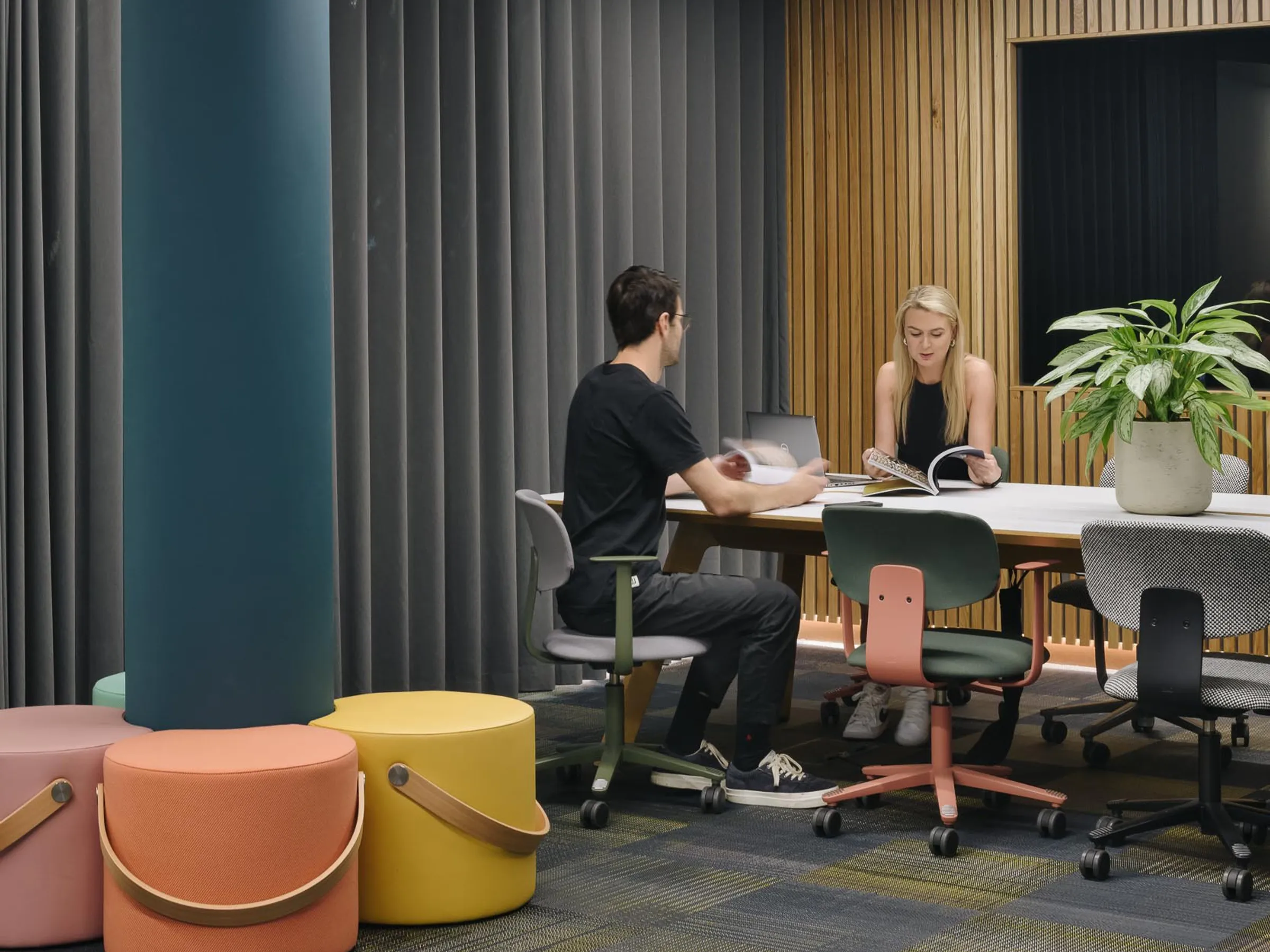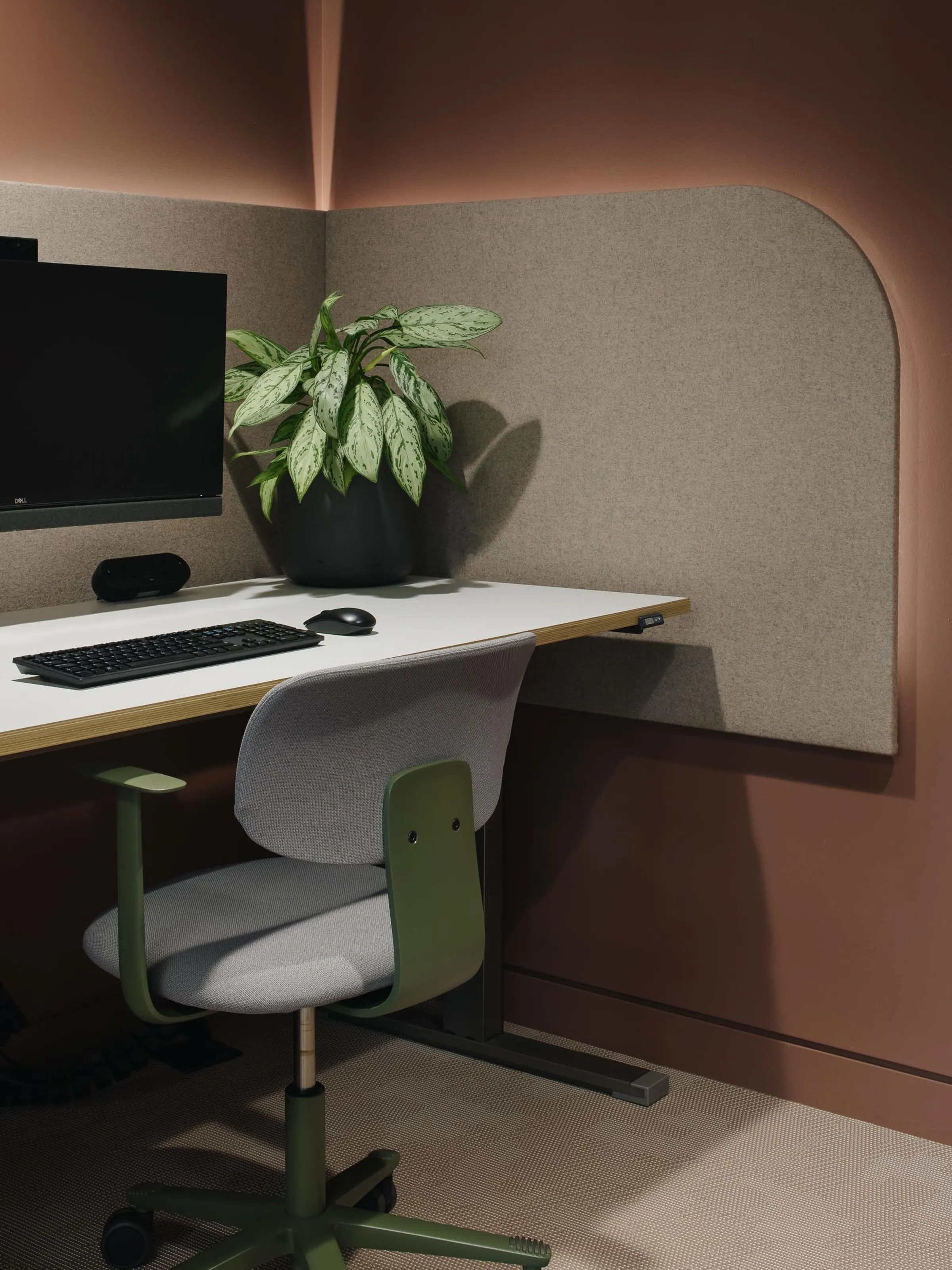The Ethics Behind Workplace Design Consultancy
Experts in workplace design are constantly balancing a range of elements to create an environment that is safe, efficient, comfortable, and welcoming. What is the ethical framework that defines these demands?


Written by
Fritha Selwyn-Jones
Contents
As workplace design consultants, we have to juggle a variety of different considerations when crafting the perfect workplace. Budget and timeline must be plotted against functionality, branding, and sustainability. One of the top priorities in any project of ours is ethics. Ethical design considerations are what hold us accountable for creating a space that values everyone using it equally. It must have a positive impact on the communities affected by its creation, either directly those surrounding it or those impacted by the materials and services we source.
Ethical considerations reflect our commitment to the best practices in workplace design and furniture consultancy and, by extension, our clients’, too. Through leading by example with ethics-driven design, we aim to help steer our industry towards an ever-improving, sustainable, and inclusive future. In this article, we’ll take a look at how we incorporate ethics into workplace design.
Ethics in Workplace Design Decision-Making
Ethics encompasses inclusivity, fairness, and a commitment to environmental stewardship and social responsibility. There are so many elements to ethical design. Here’s a list of the primary considerations we have at the beginning of each new project.
1. Inclusivity and accessibility
Consider the varying needs of all those who may use the space. People of different ages, abilities, and backgrounds will come into the space, so the design must be ready to accommodate them all fairly. Inclusive design considerations should account for employees with physical disabilities, as well as individuals across all age ranges. Access points, toilets, and workstations should be designed to accommodate diverse needs. Additionally, since the space may be used by members of the public, the design should anticipate and address a variety of requirements.
2. Environmental sustainability
Eco-friendly practices in design ensure a better impact on the environment and communities now and in the future. Sustainable design is foundational to ethical design because of its effect in all areas of the project, from materials sourcing to emissions over time. More on this further down.
3. Health and safety
Ensuring the safety of those using the space is an important ethical priority. This ranges from emergency measures to preserve safety and life to ergonomic considerations that protect users’ health over time.
4. Social responsibility
Every company will have its own set of social values, whether that’s supporting local charities or communities, fair-trade sourcing, or specific ethical practices. Workplace design should reflect these to help the company reach its KPIs.
5. Cultural sensitivity
Art, decor, and amenities in a workplace should account for cultural considerations, not only of the location but the people who use the space too. It’s important that we’re sensitive to diverse cultures and backgrounds, what they need from the space and the nuanced choices we make.
6. Transparency and privacy
Transparency in practices and processes builds trust and ensures accountability, so we need to consider this at the design stage of the project. Similarly, we need to ensure sufficient privacy and confidentiality can be achieved.
7. General wellbeing
Mental health, emotional wellbeing, and work-life balance are important ethical considerations impacted by workplace design, where incorporating areas for relaxation, socialising, and rest are essential.
8. Growth and development
It’s important we future-proof workspaces to be sustainable in the sense of growth, expansion, and development so that their functionality and feel doesn’t deteriorate quickly over time and negatively impact the wellbeing of their users.
Legislation that Holds Us Accountable to Ethical Practices
Our own drive to safeguard users and communities is the important first step in ethical design, but we also have to meet requirements set out under UK legislation. These ensure that all design in the UK is regulated and protects all end-users to an approved standard.
Health and Safety at Work Act 1974: requires risk assessment and the implementation of measures to protect physical health in the workplace.
The Workplace (Health, Safety and Welfare) Regulations 1992: requires that features are included in designs that meet the needs of basic health and safety, including air vents, heating, and lighting.
Environmental Protection Act 1990: requires certain environmental considerations are made including those pertaining to waste management and pollution control.
Equality Act 2010: protects the workforce from discrimination based on factors like age, sex, ability, and religion.
Disability Discrimination Act 1995: demands that adjustments are made to workplaces to accommodate those with disabilities.
Data Protection Act 2018 and GDPR: safeguards the ethical collection, storage, and use of personal data and digital surveillance.
The Buildings Regulations 2010: require that design and construction meet all legal standards for accessibility, safety, and sustainability.
So, when we design a workplace, we need to start with these pieces of legislation first, combined with a detailed understanding of the nature of our clients’ specific needs. These provide the playground that we use to come up with an innovative design, creatively working with these demands to produce a space that meets all ethical requirements.


Promoting Sustainable Choices
Sustainable approaches to workplace design lay the foundations of a more environmentally friendly space in which the business can meet relevant KPIs. By creating a space which upholds sustainable practices like energy conservation and reuse of materials, we can help position a business to have a positive impact through their effect on the environment.
Sustainability in workplace design forms a cornerstone of the pursuit of ethical practice. As green initiatives so often go hand in hand with ethical considerations, it’s through this approach to design that we can hit KPIs for both. Take a look at some of these examples that show how intertwined sustainability and ethics are.
Sustainability Consideration | Ethical Benefit |
Use of natural light and green spaces. | Improves employee happiness and wellbeing. |
Choosing sustainable furnishings and materials. | Commitment to the broader community, the environment, and future generations over immediate profit or convenience. |
Designing for inclusivity and accessibility. | Considers the needs and wellbeing of all those using the space with equal importance. |
Supply chain and practice transparency. | Honesty and integrity hold the company accountable to ethical commitments. |
Designing for the long-term. | Prioritising lasting value reduces the impacts of design and construction processes on the community and environment. |
Choosing higher quality, sustainable options. | Creates a sense of value reflected in employee morale. |
Engagement in community support. | Proves commitment to local community and economy and raises spirits. |


Prioritising Inclusivity and Accessibility
Inclusivity and accessibility ensure we design for a diverse workforce of all ages, backgrounds, and abilities who can use the space equally. This approach to workplace design has a significant impact on those in the workspace, not only bringing a wider range of talent to the business but also ensuring the wellbeing of all those who use it as they feel seen, heard, and supported. The psychological impact of workplace design has a huge influence on the ethical experience of its users.
Here are some examples of how the demand for inclusivity affects design in the workplace.
Inclusivity Consideration | Design Consideration |
Physical abilities | Ramps and wheelchair access, wide doorways and walkways, handrails, accessible toilets, adjustable workstations and furniture. |
Age | Easy-to-read signposting, braille, seating and rest areas, user-friendly technology, lighting considerations, and temperature considerations. |
Gender | Gender-neutral toilets, and privacy areas (such as for breastfeeding). |
Cultural sensitivity | Quiet prayer spaces, culturally sensitive colour, artwork, and decor. |
Sensory experience | Quiet, private zones, soundproofing, controlled lighting, muted colour and decor. |
Following on from the COVID-19 pandemic, when we adjusted to creating our own personal work environments for almost three years, inclusivity stands for even more than it did before. Now designing to account for the wellbeing of everyone means we engage employees in what works for them: how they feel they work most productively, creatively, and happily in their environment.
Employees need to feel comfortable being themselves at work, and so our design has to account for that; however it looks. We can create a positive employee experience through intelligent design of flexible working, social breakout spaces, private workspaces, and ergonomics.
Understanding the Local Context
In workplace design, local, cultural, and environmental factors significantly influence the relevance, effectiveness, and comfort of a space. Culturally sensitive design instils a sense of identity and belonging amongst employees, and recognition of these factors raises mutual respect and loyalty between the workforce and the company providing the space.
This is especially important when we carry out international projects. Having a local team and working collaboratively with local contractors is paramount so that we can ensure the nuance of culturally sensitive design is upheld, especially when we combine traditional and modern design approaches. This is more than just aesthetics in workplace design; it is about creating a space that celebrates the community using it.
What are some important local contextual elements we need to remember when designing a workspace?
Compliance with local regulations in building and design
Respect of cultural expectations, norms, and values in visual aesthetics and amenities
Adaptation to the local climate and how energy efficiency should be approached
Designing for disaster resilience and weather according to local environmental risks
The local context of workplace design also has a positive effect on sustainability goals. Working with local or regional suppliers and contractors greatly reduced the carbon emissions of any project due to reduced transportation demands. Choosing local materials and design elements supports the local economy and can further instil a sense of belonging in the space that celebrates its place in the world.
What are the ethical considerations of your workplace, and how do you meet them with the design of the environment? If you feel like you could have a better impact or provide more value to your workforce, a workplace design consultancy is the best place to start. We’re the professionals who know all the ethical goalposts and creative solutions to navigate them. Start the process today with a chat.
Published on
February 26, 2024
Related Articles













